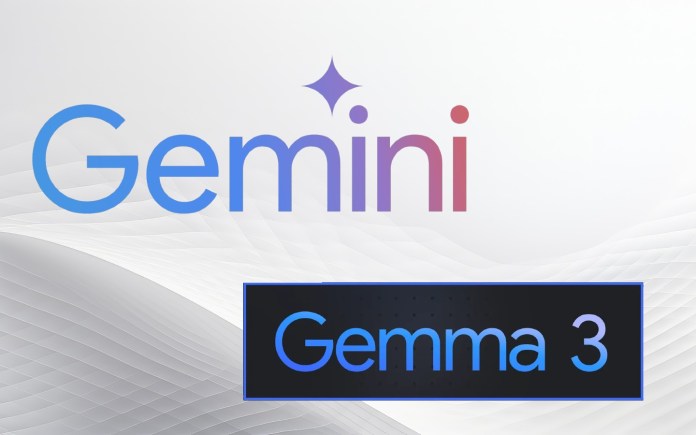After the huge success of OpenAI’s ChatGPT, many observers and analysts dismissed Google as the behemoth that failed to adapt to the new wave of AI technology. The company’s botched release of Bard and other missteps only reinforced those sentiments.
However, two years later, Google has made a great comeback with Gemini and Gemma, closing in on OpenAI in nearly every aspect. With its latest feature and model releases, Google’s AI products are now on par with OpenAI and open model providers.
Gemma 3
Gemma 3 is the latest release in Google’s open weight models. It comes in several sizes (1B, 4B, 12B, and 27B), suitable to run on a range of hardware, from phones to accelerators. It uses a vision encoder to accept multi-modal input, including text, images, and video as input. It also supports function calling and structured output, which is suitable for agentic applications and systems where the model must interact with tools and other software components.
Gemma 3 has a 128,000-token context window, making it suitable for long multi-turn conversations, processing long documents, and prompts with many examples (the 1B model has a 32k context window). Google has managed to create a combination of local and global attention layers to manage the long context without exploding memory and compute costs for extending the context window.
What makes Gemma 3 especially appealing is its efficiency. Even the largest variant can fit on a single accelerator, making it an appealing model for all kinds of applications. The main complaint against Gemma 3 is the license, which sets vague restrictions and terms of use on how you can apply it.
Gemini app gets major upgrades
In my experiments, Gemini is as good (if not better) than ChatGPT in tasks that require web search. Google’s new upgrades make it even more useful.
Gemini now has a Canvas button, which is a copy of the similarly named feature in ChatGPT (ironically, ChatGPT copied Gemini’s Deep Research feature verbatim not long ago). You can use Canvas to collaborate with Gemini on long outputs. For example, you can prompt to generate the draft for an article and then use Canvas to refine or rewrite parts of it, add or remove sections, and more. Canvas can also generate, edit, and preview code, making the experience much smoother than having to copy-paste the responses in an IDE.
Google has also Audio Overview, a feature that gives the capabilities of NotebookLM to Gemini. For example, you can use Deep Research to generate a long document about a specific topic and then use Audio Overview to turn it into a podcast that you can listen to during your commute or workout.
Earlier, Google had added a Personalization mode, which gives Gemini access to your search history to provide more relevant answers to your prompts. Personalization uses Gemini Flash Thinking, the reasoning version of Google’s flagship model (the equivalent to DeepSeek-R1 and OpenAI o3).
Google has also provided access to Deep Research to the users of Gemini’s free tier (Gemini Advanced users get access to a more extended version of Deep Research). The results are very impressive (I’ll be working on a post about this later) and as good—if not better—than OpenAI Deep Research, which is only available to the users of ChatGPT Pro ($200 per month) and in limited capacity to ChatGPT Plus ($20 per month).
Google is also experimenting with an image-generation version of Gemini that is very consistent across multiple prompts.
All of these features are in addition to the massive integration efforts that Google is leading across its entire Workspace suite, with Gemini becoming the omnipresent AI in your email and productivity applications, along with a free coding assistant that can integrate into various IDEs.
After a slow start, Google has proven that it will not go down easily. It is very likely that Google will become the dominant player in the LLM and generative AI market in the near future.





















